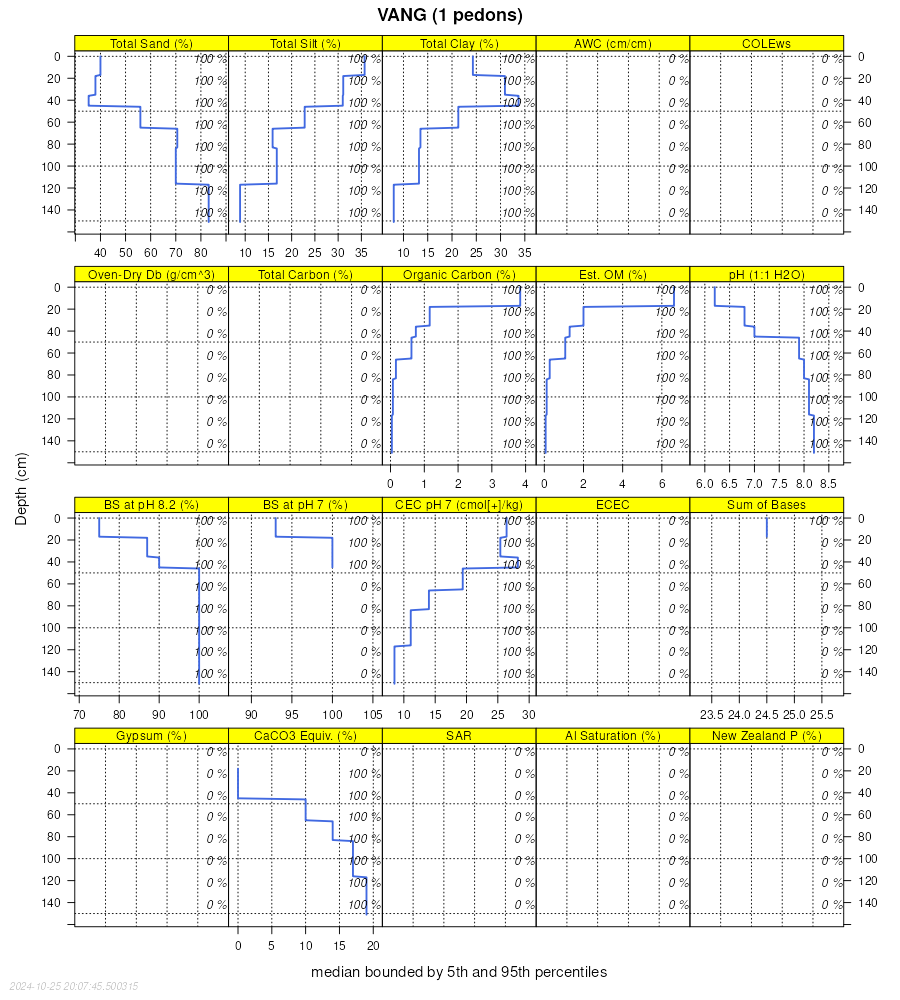| Vang loam, 0 to 2 percent slopes | G302A | 1911 | 2573782 | 2q4z9 | nd005 | | 1:12000 |
Vang loam, 2 to 6 percent slopes | G302B | 1269 | 2573693 | 2q4zb | nd005 | | 1:12000 |
Walsh-Vang loams, 2 to 6 percent slopes | F311B | 50 | 2587707 | 2q4vs | nd005 | | 1:12000 |
Vang loam, 0 to 2 percent slopes | F302A | 10 | 2587643 | 2q4vf | nd005 | | 1:12000 |
Walsh-Vang loams, 0 to 2 percent slopes | F311A | 6653 | 2587556 | 2q4vr | nd019 | 1987 | 1:20000 |
Vang-Coe complex, 2 to 6 percent slopes | F303B | 5155 | 2587551 | 2q4vg | nd019 | 1987 | 1:20000 |
Walsh-Vang loams, 0 to 2 percent slopes | I557A | 2077 | 2643083 | 2pywl | nd019 | 1987 | 1:20000 |
Vang loam, 0 to 2 percent slopes | F302A | 1876 | 2587550 | 2q4vf | nd019 | 1987 | 1:20000 |
Vang-Coe complex, 6 to 9 percent slopes | F303C | 1215 | 2587552 | 2q4vh | nd019 | 1987 | 1:20000 |
Vang loam, 0 to 2 percent slopes | I161A | 1053 | 2643090 | 2mbms | nd019 | 1987 | 1:20000 |
Walsh-Vang loams, 2 to 6 percent slopes | F311B | 826 | 2587557 | 2q4vs | nd019 | 1987 | 1:20000 |
Vang-Coe complex, 2 to 6 percent slopes | I590B | 436 | 2643099 | 2pywp | nd019 | 1987 | 1:20000 |
Vang-Coe complex, 6 to 9 percent slopes | I590C | 128 | 2643081 | 2pywq | nd019 | 1987 | 1:20000 |
Walsh-Vang loams, 2 to 6 percent slopes | I557B | 46 | 2643061 | 2pywm | nd019 | 1987 | 1:20000 |
Brantford-Vang loams, 0 to 2 percent slopes | G309A | 3965 | 2575309 | 2q4zk | nd021 | 1989 | 1:20000 |
Vang loam, 0 to 2 percent slopes | G302A | 458 | 2575304 | 2q4z9 | nd021 | 1989 | 1:20000 |
Vang loam, 0 to 2 percent slopes | I161A | 748 | 2642592 | 2mbms | nd035 | 1980 | 1:20000 |
Vang loam, 0 to 2 percent slopes | F302A | 131 | 2587435 | 2q4vf | nd035 | 1980 | 1:20000 |
Vang loam, 0 to 2 percent slopes | G302A | 24 | 2576523 | 2q4z9 | nd035 | 1980 | 1:20000 |
Vang loam, 0 to 2 percent slopes | G302A | 843 | 2577301 | 2q4z9 | nd063 | | 1:12000 |
Brantford-Vang loams, 0 to 2 percent slopes | G309A | 14 | 2577307 | 2q4zk | nd063 | | 1:12000 |
Walsh-Vang loams, 0 to 2 percent slopes | I557A | 3583 | 2643031 | 2pywl | nd067 | 1972 | 1:20000 |
Vang loam, 0 to 2 percent slopes | I161A | 1996 | 2643018 | 2mbms | nd067 | 1972 | 1:20000 |
Walsh-Vang loams, 2 to 6 percent slopes | I557B | 385 | 2643030 | 2pywm | nd067 | 1972 | 1:20000 |
Vang-Coe complex, 6 to 9 percent slopes | I590C | 28 | 2643019 | 2pywq | nd067 | 1972 | 1:20000 |
Brantford-Vang loams, 2 to 6 percent slopes | F309B | 3 | 2585500 | 2q4vn | nd067 | 1972 | 1:20000 |
Vang-Brantford loams, 0 to 2 percent slopes | I483A | 0 | 2643017 | 2ptxm | nd067 | 1972 | 1:20000 |
Brantford-Vang loams, 0 to 2 percent slopes | G309A | 2528 | 2581161 | 2q4zk | nd073 | 1992 | 1:20000 |
Brantford-Vang loams, 0 to 2 percent slopes | G309A | 30 | 2579514 | 2q4zk | nd081 | 1959 | 1:12000 |
Vang-Brantford loams, 0 to 2 percent slopes | F315A | 3702 | 2586155 | 2q4vv | nd099 | 1967 | 1:20000 |
Brantford-Vang loams, 2 to 6 percent slopes | F309B | 2278 | 2586150 | 2q4vn | nd099 | 1967 | 1:20000 |
Walsh-Vang loams, 0 to 2 percent slopes | F311A | 1716 | 2586152 | 2q4vr | nd099 | 1967 | 1:20000 |
Vang-Brantford loams, 0 to 2 percent slopes | I483A | 923 | 2642907 | 2ptxm | nd099 | 1967 | 1:20000 |
Brantford-Vang loams, 6 to 9 percent slopes | F309C | 590 | 2586151 | 2q4vp | nd099 | 1967 | 1:20000 |
Brantford-Vang loams, 2 to 6 percent slopes | I483B | 507 | 2642895 | 2ptxn | nd099 | 1967 | 1:20000 |
Walsh-Vang loams, 2 to 6 percent slopes | F311B | 380 | 2586153 | 2q4vs | nd099 | 1967 | 1:20000 |
Brantford, loamy skeletal-Vang loams, 2 to 6 percent slopes | G305B | 116 | 2797753 | 2sd2j | sd013 | 1987 | 1:20000 |
Brantford-Vang loams, 0 to 2 percent slopes | G309A | 5 | 2797661 | 2q4zk | sd013 | 1987 | 1:20000 |
Brantford, loamy skeletal-Vang loams, 2 to 6 percent slopes | G305B | 107 | 2799244 | 2sd2j | sd089 | 1980 | 1:20000 |
Vang loam, 0 to 2 percent slopes | G302A | 23 | 2798808 | 2q4z9 | sd089 | 1980 | 1:20000 |
Brantford-Vang loams, 0 to 2 percent slopes | G309A | 14 | 2798809 | 2q4zk | sd089 | 1980 | 1:20000 |
Vang loam, 0 to 2 percent slopes | G302A | 288 | 2799546 | 2q4z9 | sd115 | 1997 | 1:24000 |














